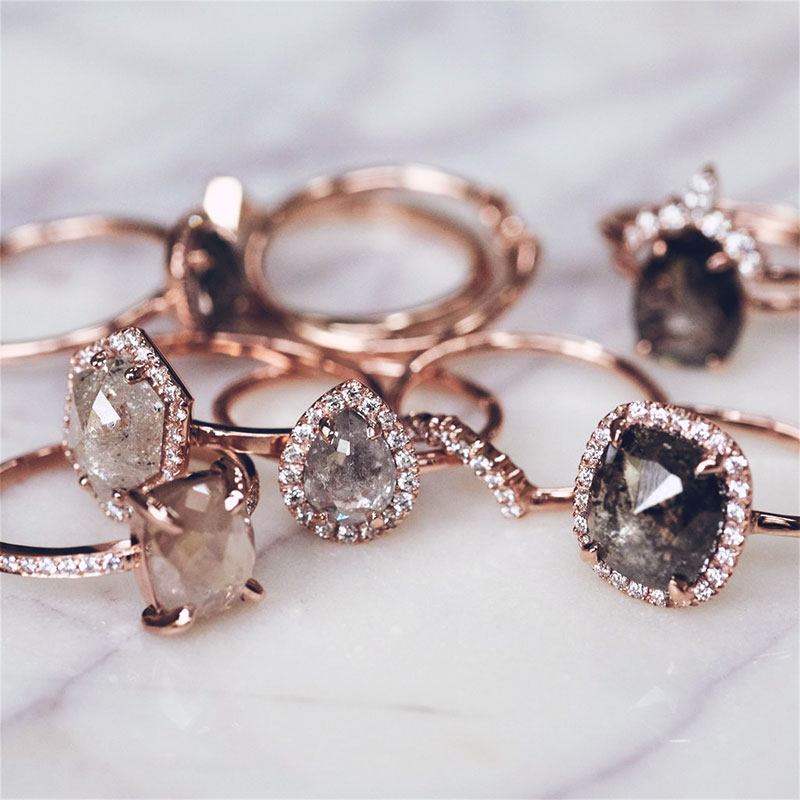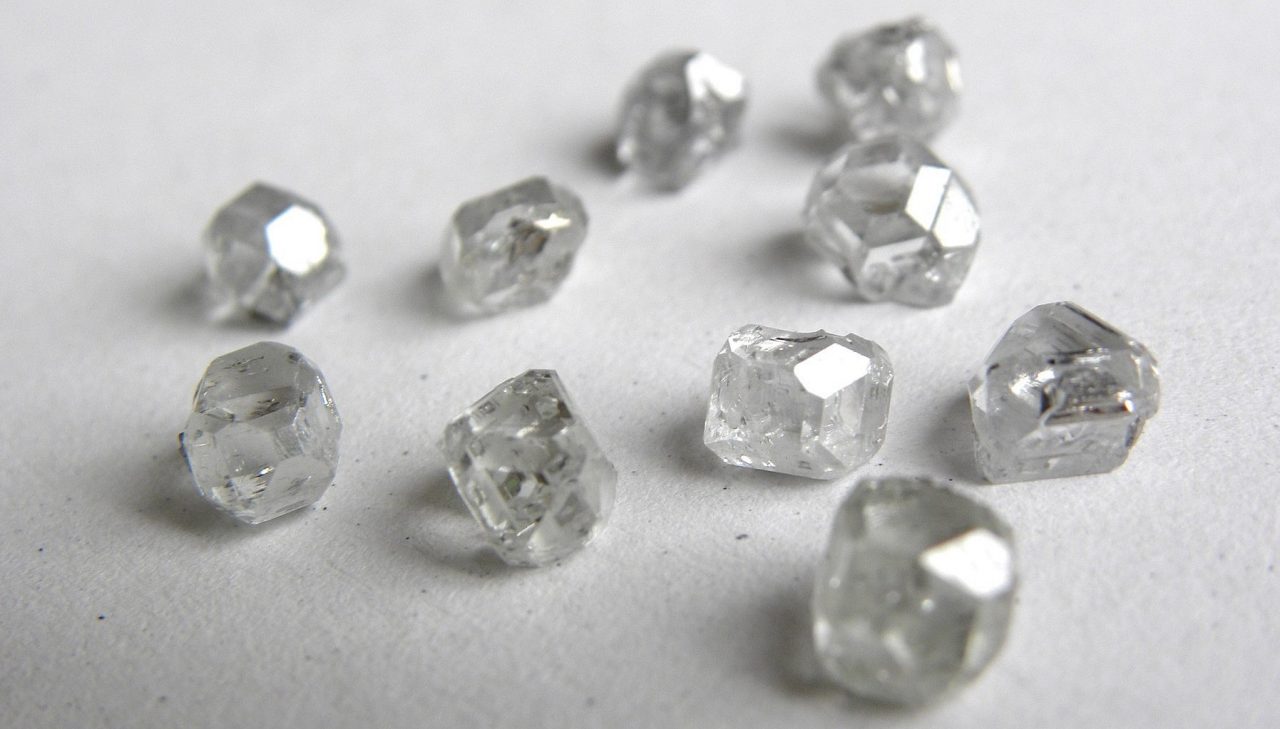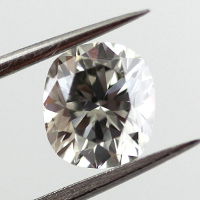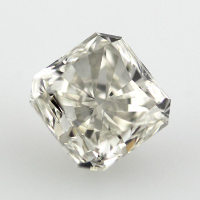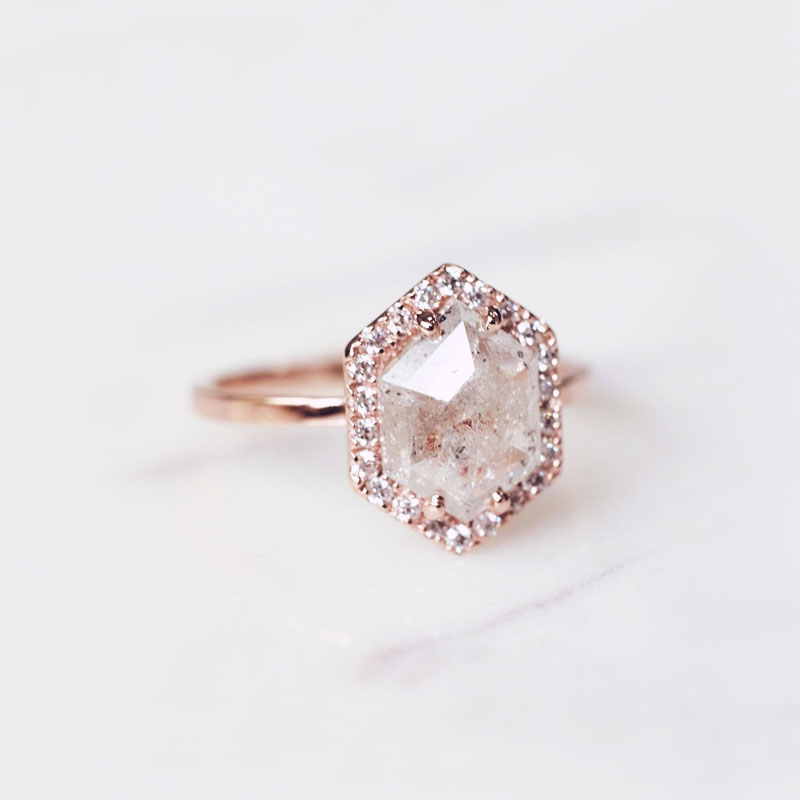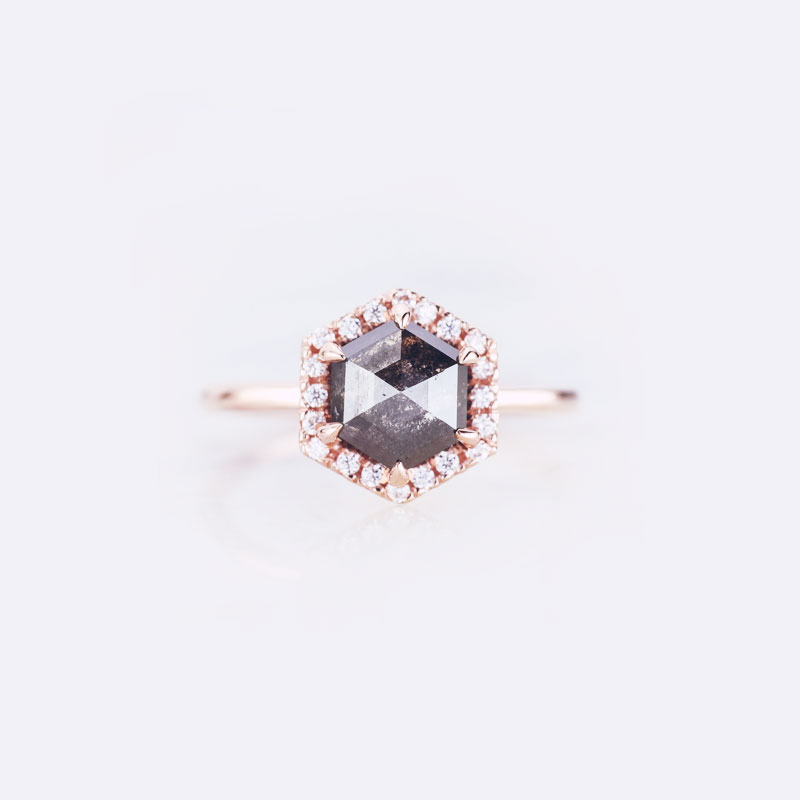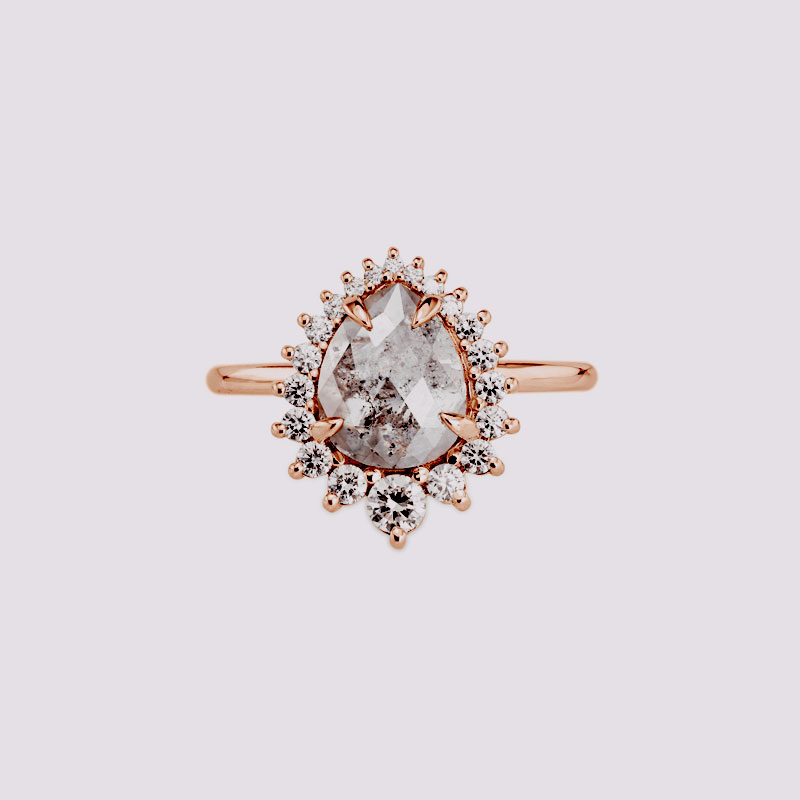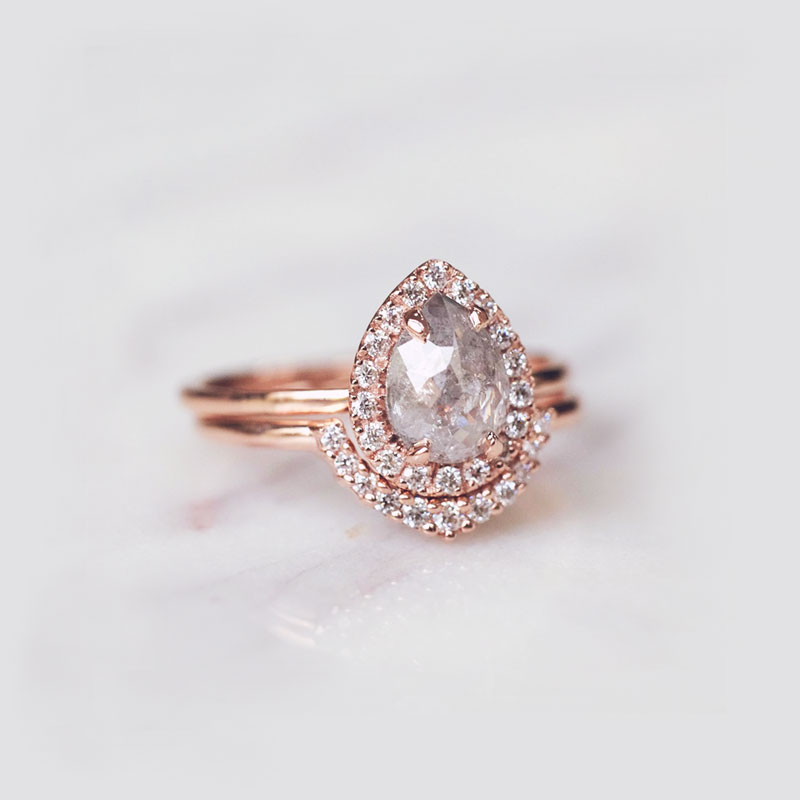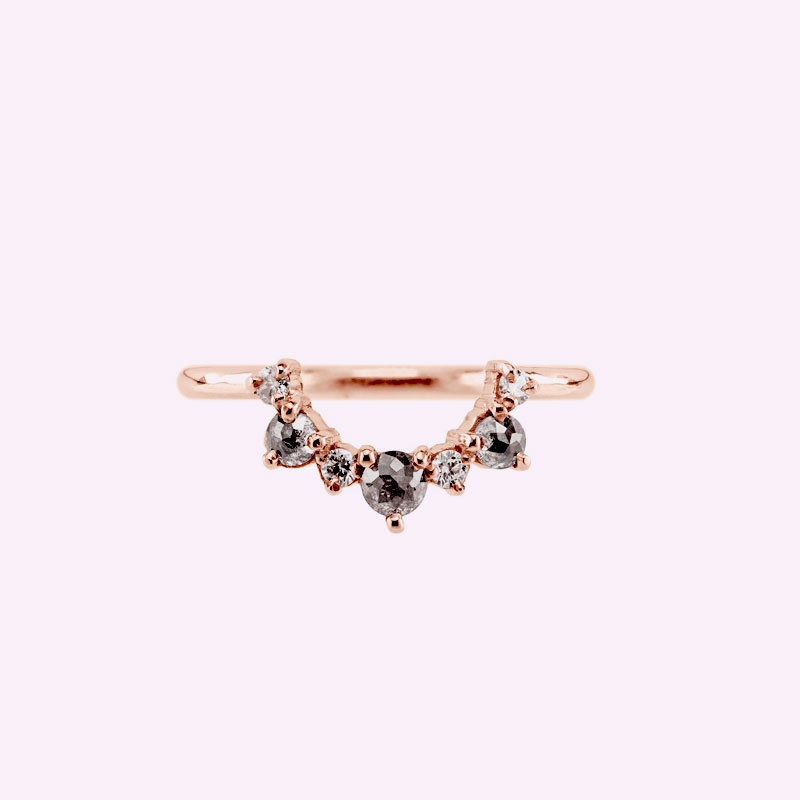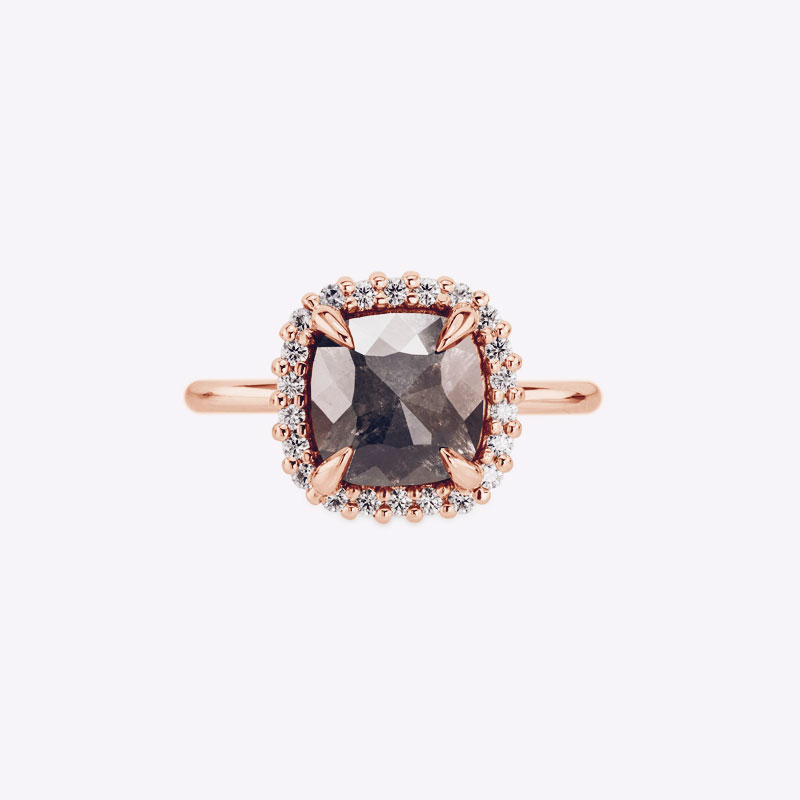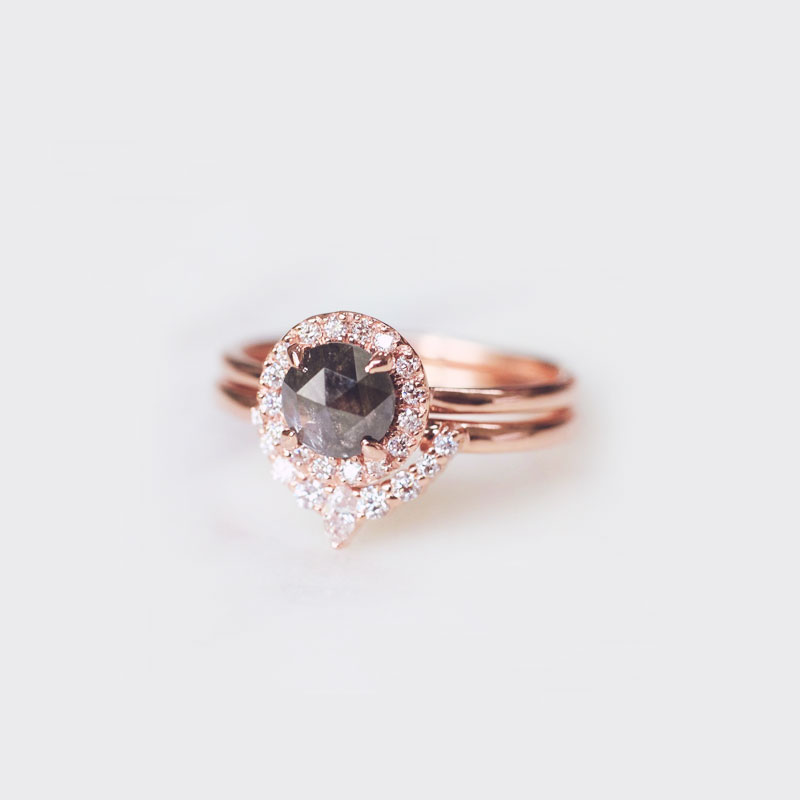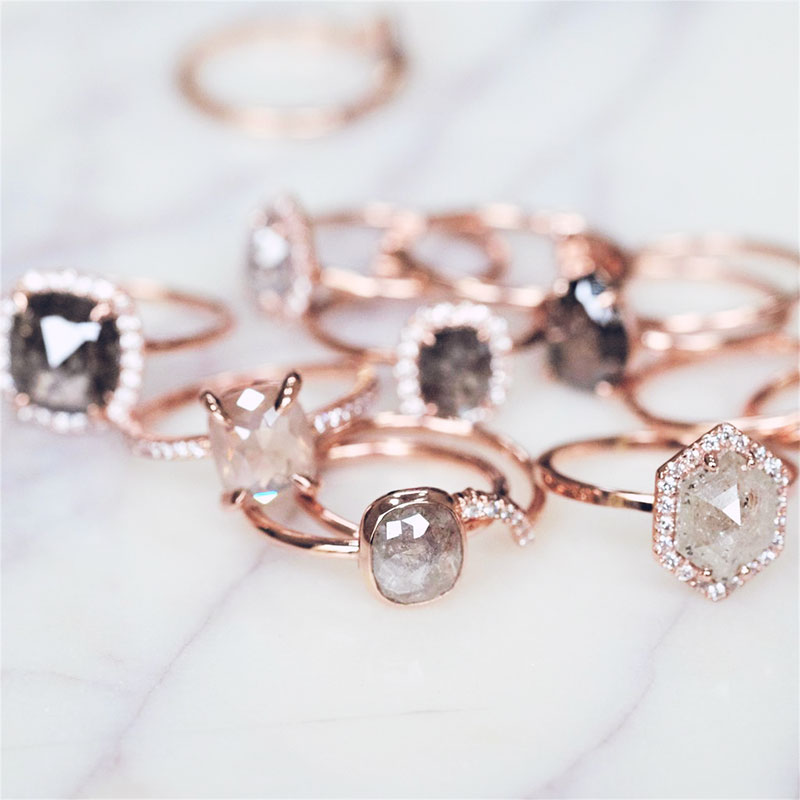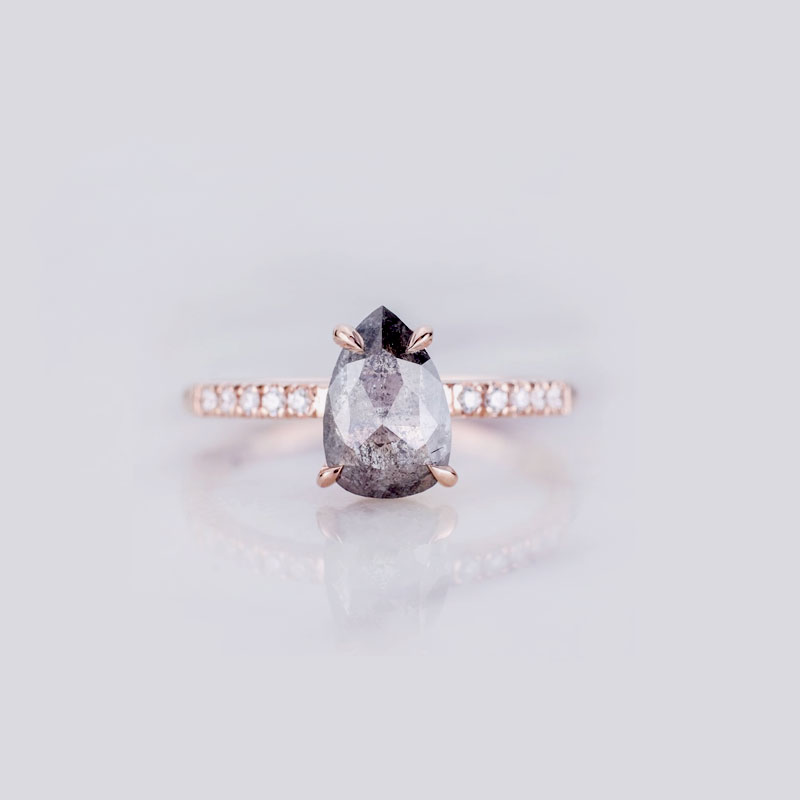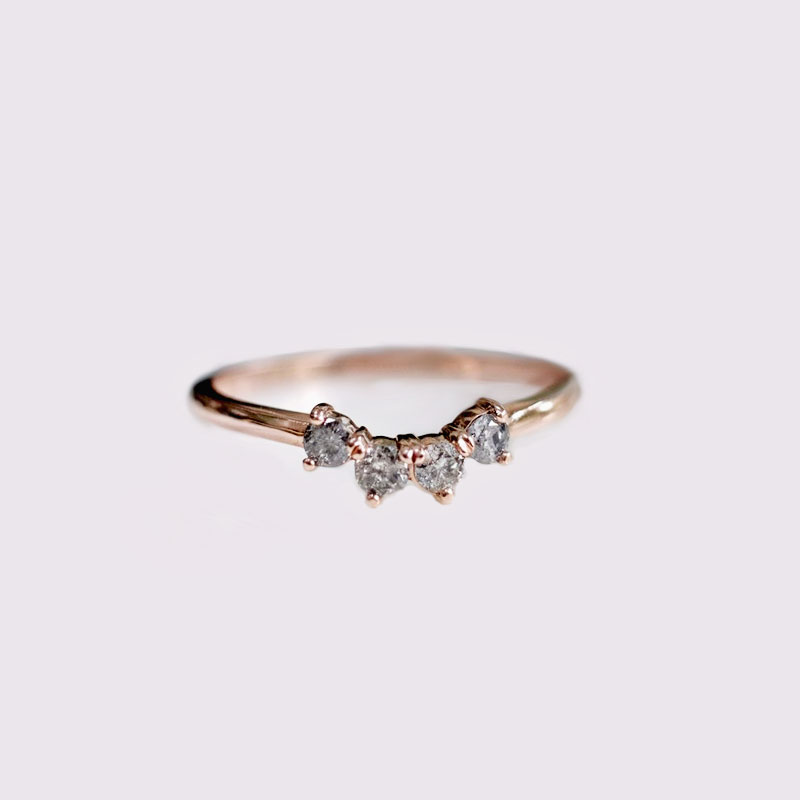THE COLOURLESS DIAMOND has always been considered a classic for engagement rings for many years gone by and will continue for years to come. Prized for its flawlessness, lack of colour, cut, and carat weight, these attributes add to the stone’s inherent value.
However, beauty can also be found in the imperfections of this beloved stone. Minerals and other compounds that are present in the forming of these diamonds add character and colour that is becoming more and more appreciated today. Rather than clear, tones of grey, light grey, white, yellow and even opaque black are just some of the hues these stones can contain. Furthermore, aside from these Grey Diamonds as they have become known, imperfections in these stones, known as inclusions, give them a flecked appearance creating stones that known today as Salt & Pepper Diamonds.
Grey Diamonds
Coloured diamonds (especially pinks, yellows and blues) have been exciting gem collectors and creating a stir at auctions for the past few years. All throughout, however, the grey diamond has been steadily gaining popularity for its understated elegance as a central stone. Mined from Australia, India, South Africa and Russia, natural fancy grey diamonds get their colour from a high concentration of hydrogen or boron. Many grey diamonds also contain hints of violet, green, yellow or blue.
As the technology for cutting diamonds come about until the 15th century, darker-hued grey and black stones were in fact, the first historical diamonds. It is for this reason that throughout much of history, diamonds were black or graphite grey in appearance, and were represented as such in paintings before the Renaissance.
Natural one-of-a-kind stones in modern & vintage settings
Natural grey diamonds derive their colour from a hydrogen defect that makes the stones absorb equal quantities of all light wavelengths. Although much more rare, some fancy grey diamonds that are type IIb get their colour from boron, which is well-known for giving blue diamonds their distinct colouration.
Unlike the majority of other kinds of fancy coloured diamonds, grey diamonds have little or no saturation–their color is a function of their tones. Fancy grey diamonds occupy a wide scope of tones, ranging from lighter-hued pewter to deeper-hued graphite. A grey diamond can lean either cool or warm depending on the kind of secondary colour it is found with – those that are paired with blue or green are usually cool-toned and those that are paired with browns or yellows will be warm-toned. [Source]
Grey diamonds come in the following intensity levels: Light Gray, Fancy Light Gray, Fancy Gray, Fancy Dark Gray, and Fancy Deep Gray. It is rare to find a colored diamond that exists as one colour without any secondary modifying colours. Grey diamonds can be found paired with brown, yellow, pink, green, purple, blue or violet. A grey diamond that is modified by a much rarer colour, such as the last — blue or violet — (Fancy Blue-Grey or Fancy Dark Violet-Grey) will be much valuable than a Fancy Grey or Fancy Dark Grey diamond.
It is thought that natural grey diamonds are rather rare, at least when compared to yellow and brown diamonds, although with regard to price, they lie near these on the lower range of fancy coloured diamonds. Perhaps a part of their emerging popularity in recent years is that their more affordable pricing has made them a compelling alternative to white colourless diamonds. It should noted, however, that while grey diamonds are relatively affordable, when their colour leans toward violet or blue, which is extremely rare, prices can increase to the tens of thousands.
Affordability aside, their understated elegance is also a draw, as most natural grey diamonds have weaker colour saturation than other coloured diamonds. Their appearance can be thought of as a colourless diamond tinged with a sophisticated metallic tinge or aura, making them a beautiful alternative to conventional engagement rings.
Shop our selection of grey diamonds here.
Salt & Pepper Diamonds
If a diamond has many very small black and white inclusions (or imperfections), it becomes what is known as a Salt & Pepper Diamond.These unique diamonds have a flecked appearance due to their numerous visible inclusions. Inclusions are blemishes such as black carbon spots, cracks, white spots, feathers, chips or clouds. Once considered undesirable, these diamonds are now seen as a modern twist on the perfect center stone, and as such, have become an emerging trend for engagement rings.
Wildly flawed, Salt & Pepper diamonds capture the imaginations of modern brides as these raw flaws reveal the stones’ natural origins. The use of these stones is also considered sustainable, a point that is exceedingly important to eco-conscious millennial consumers, as the use of irregular flecked and imperfect diamonds creates less waste. Additionally each stone is unique by nature, one-of-a-kind, and cannot be mass-produced.
Discover Grey and Salt & Pepper diamonds here.
Follow us on Instagram @thisisglamorous
[instagram-feed]

